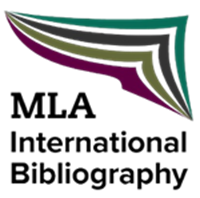O léxico do português sob o olhar de Gaetano Osculati: elementos da fauna e flora
DOI:
https://doi.org/10.11606/issn.2238-8281.v0i35p125-149Palavras-chave:
Gaetano Osculati , Viajantes italianos , Neologismos do portuguêsResumo
O Rio Amazonas e sua imensa bacia hidrográfica ladeada por imponentes florestas, sempre exerceram um fascínio imenso em todos que ouviram falar dele. Desde o seu descobridor Vicente Pinzón, que em 1500 denominou-o de Rio Santa Maria del Mar Dulce, até os dias de hoje, aventureiros, biólogos, cartógrafos, geógrafos, indianistas e muitos outros cientistas percorreram suas águas à procura de informações que pudessem explicar a grandiosidade dessa obra da natureza. O fascínio do Rio-mar atraiu também o viajante italiano Gaetano Osculati, que em 26 de outubro de 1847 começou a sua viagem em canoa pelo Rio Napo, cuja nascente está no Equador, nas proximidades do monte Cotopaxi, e foz no Rio Solimões. Gaetano Osculati, espelhando-se em Orellana, faz o mesmo e ao final da sua viagem de quatro anos, escreve Esplorazioni delle Regioni Equatoriali lungo il Napo ed il fiume delle Amazzoni, publicado em Milão no ano de 1854, o qual utilizamos para recolher o léxico português inserido incidentalmente ou voluntariamente na obra. Ao escrever sobre o que observava, na falta de termos em italiano, o explorador se apropria de novas palavras, transcrevendo-as da maneira como as ouviu. Normalmente, há, nas nomeações existentes no interior da narrativa, uma estreita ligação entre o nomear e o narrar: ao nomear, o narrador concentra na palavra uma série de sinais linguísticos, a sua carga cultural, o seu saber e sua capacidade expressiva. Pretendemos, neste artigo, à luz das teorias de Alves (1990; 2010), Klajn (1972) e Nunes (1996), recolher, registrar e classificar os empréstimos lexicais do português e do tupi, na obra de Gaetano Osculati, com o objetivo de contribuir para o estudo da Lexicologia histórica portuguesa e italiana, em especial recuperar os empréstimos lexicais portugueses utilizados pelo viajante italiano.
Downloads
Referências
ALVES, I. M. Neologismo. São Paulo: Ática, 1990.
ALVES, I. M. Neologia e neologismos do português brasileiro contemporâneo. In: LIMA-HERNANDES, M. C.; CHULATA, K. de A. (Orgs). Língua portuguesa em foco: ensino-aprendizagem, pesquisa e tradução. Lecce: Pensa Multimedia Editori, 2010, v. 1, p. 35-44.
CARVAJAL, G. de. Descubriemento del Rio de Las Amazonas. Sevilla: Imprenta de E. Rasco, 1894.
G.R.A.L. Gruppo di Ricerca Archeostoriche del Lambro. Gaetano Osculati. Mostra Storica. Museo Civico “Carlo Verri”, Biassono. Disponível em: <http://www.museobiassono.it/Italiano/index.php?page=/Italiano/Mostre/GaetanoOsculati/Pagina03.html>. Acesso em: 20 mar. 2017.
HOUAISS, A. Dicionário Eletrônico Houaiss da Língua Portuguesa. Rio de Janeiro: Objetiva, 2009. CD-ROM.
IANNI, O. A Metáfora da Viagem. Revista Cultura Vozes, Petrópolis, n. 2, p. 3-19, março-abril 1996.
KLAJN, I. Influssi inglesi nella lingua italiana. Firenze: Leo S. Olscki Editori, 1972.
LA CONDAMINE, C-M de. Viagem na América meridional descendo o rio das Amazonas. Brasília: Senado Federal, 2000, p.14. Disponível em: <https://www2.senado.leg.br/bdsf/bitstream/handle/id/1045/580837.pdf?sequence=4>. Acesso em: 19 mar. 2017.
NAVARRO, E. de A. Curso de Língua Geral. (Nheengatu ou tupi moderno). São Bernardo do Campo: Paym Gráfica e Editora, 2016.
NOGUEIRA, J. C. O legado tupi na fauna e na flora acreanas: contribuição para o ensino da língua portuguesa. In: NASCIMENTO, L. M.; LIMA, S.S. (Orgs.). Caleidoscópios da cultura brasileira. Rio de Janeiro: Letra Capital, 2014, p. 26-37.
NUNES, J. H. Discurso e instrumentos linguísticos no Brasil: dos relatos de viajantes aos primeiros dicionários. São Paulo: 1996. Tese (Doutorado em Linguística). Instituto de Estudos da Linguagem, Universidade Estadual de Campinas, São Paulo, 1996.
OSCULATI, G. Esplorazioni delle Regioni Equatoriali lungo il Napo ed il fi ume delle Amazzoni. Milano: Presso i Fratelli Centenari, 1854.
SCHULTZ, B. S. O conhecimento de mundos desconhecidos: palavras e coisas do português na literatura dos viajantes italianos. Cascavel: Edunioeste, 2016.
SCHULTZ, B. S. Brasileirismos e portuguesismos incorporados ao léxico da língua italiana: análise de campos léxico-conceptuais. São Paulo, 2007. Dissertação (Mestrado em língua italiana). Faculdade de Filosofia, Letras e Ciências Humanas, Universidade de São Paulo, 2007.
SMITH, A. Os conquistadores da Amazônia. Quatro séculos de exploração e aventura no maior rio do mundo. Tradução de M. T. M. Cavallari. São Paulo: Best Seller, 1990.
TRECCANI. Dizionario bibliográfico. Disponível em: <http://www.treccani.it/enciclopedia/gaetanoosculati_(Dizionario-Biografi co)/>. Acesso em: 16 mar. 2017.
Downloads
Publicado
Edição
Seção
Licença
Copyright (c) 2017 Revista de Italianística

Este trabalho está licenciado sob uma licença Creative Commons Attribution-NonCommercial-NoDerivatives 4.0 International License.
A revista retém os direitos patrimoniais dos artigos e os publica simultâneamente sob uma Licença Creative Commons-Atribuição-Não Comercial-Sem Derivações.











